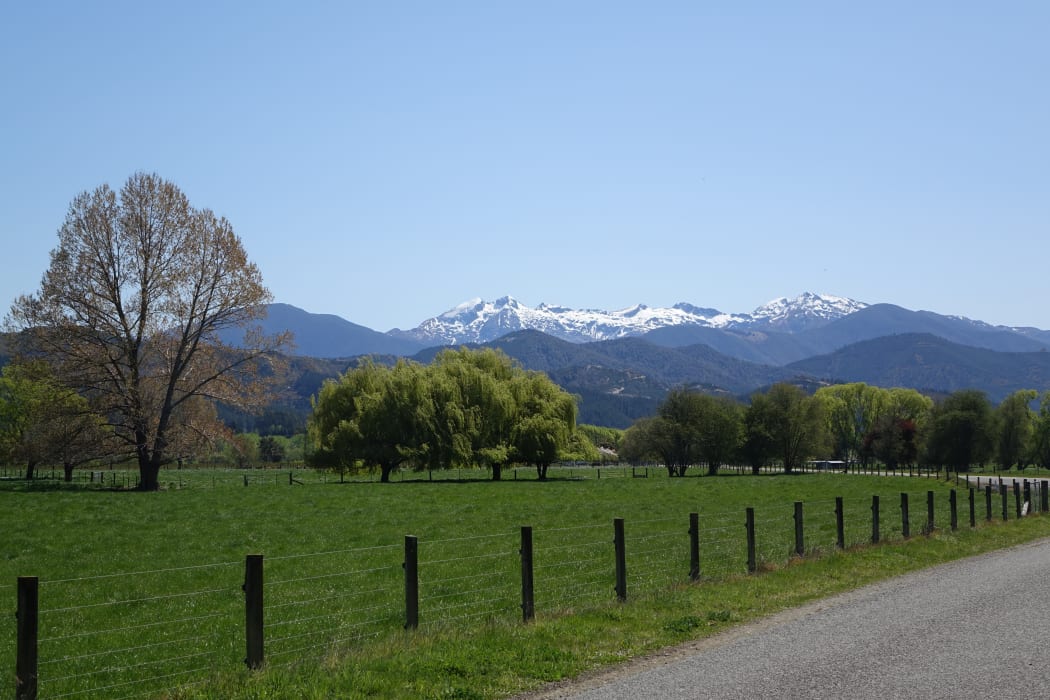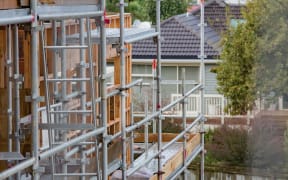Tasman District Council is struggling to balance demand for residential growth with the need to protect valuable productive land, its mayor says.

A farm beneath the Arthur Ranges: Could this one day be the site of a residential development? Photo: RNZ / Tracy Neal
Mayor Richard Kempthorne said the council had exceeded land development targets under its housing accord agreement with the government - and there were signs the pace of development seen in the past year would pick up.
The council was required to release 130 new residential sections by June but had surpassed that by close to 100, he said.
Consents had also exceeded planning projections. It had planned to issue 320 consents for new houses in that time, and had managed 394.
It was unlikely that high rises would start popping up in Richmond, but more intensive housing developments were on the horizon, Mr Kempthorne said.
"What we see when we look around Richmond, there's been one area that has sat for more than five years which is suddenly almost fully developed, and that's happened in the last year."
Government statistics showed Tasman's population was now close to 50,000. It was due to hit 54,000 within the next 20 years and then flatten off by 2043. Average house values were now close to $440,000, the employment rate was 69 percent and the average household income was $85,000. Agriculture was Tasman's second biggest economic contributor, behind manufacturing.
Mr Kempthorne said most of the housing development was around the district's main urban centre of Richmond, and some of it was encroaching on the productive Waimea Plains.

Highland cattle in Golden Bay Photo: RNZ / Tracy Neal
"We are trying with our planning and zoning to protect the productive land - most of the Waimea Plains is very high quality land, but we get into a clash situation when it comes to providing zoned land for residential development."
Mr Kempthorne said there was currently a large block on the plains zoned residential and earmarked for housing, which he hoped might be an example of how intensive housing could be achieved in the district.
"There are a lot of good examples of good, high quality development, which I think a lot of people would like."
Mr Kempthorne was reluctant to say where those examples were, except to say Vancouver in Canada had some very good developments.
"We're probably not going to go that far - I saw a whole suburb of four-storey terraced housing, but that's too different from our market, but there are other examples of two-storey housing close together, less garden, or a communal garden with reserves for children to play in."
Mr Kempthorne said the council would need to review its growth model to allow for more intensive housing developments.
"There is every indication that there will be more development next year than in the previous year. This suggests that the current zoned land available will be developed more quickly than originally expected. We do need to consider some expansion of the urban footprint but also how to protect our high-quality rural land with good horticultural capacity," he said.







